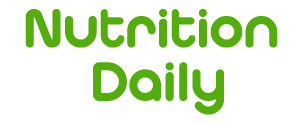World Marrow Donor Day (WMDD) is celebrated globally on the third Saturday of September and in 2019, it will be celebrated on the 21st of September. The primary objective of WMDD is to thank all the donors worldwide, who have donated or are on the global registry waiting to donate. The secondary objective is to raise public awareness and benefits to patients’ lives.
Who can become a donor?
A donor can be any volunteer aged 18-60 yrs old, in good health and willing to donate a marrow or blood stem cell to the patient.
Bone marrow is the soft, spongy tissue in the center of your bones where the production of blood cells happens. It contains “hematopoietic” stem cells, which are early-stage cells with a unique potential to develop into many different cell types in the body. For instance, when a cell divides, each cell has the potential to either remain a stem cell or become another type of cells, such as a muscle cell, a red blood cell, or a brain cell. Stem cells are found in bone marrow, in the blood and the umbilical cord.
Possible sources of blood stem cells for donation are:-
- Bone marrow stem cells - collected from the pelvis
- Peripheral blood stem cells - collected from the bloodstream
- Umbilical cord blood stem cells - collected from the placenta and umbilical cord of a newborn baby.
- When the stem cells are collected from circulating blood, it is called a Peripheral Blood Stem Cell Transplant (PBSCT). On the other hand, if the site of the collection is marrow, usually hip bone area, it is called Bone Marrow Transplant (BMT) or Stem Cell Transplants (SCT).
Types of SCT
1)Autologous transplantation - patients receive their stem cells, acts as a donor. Mostly used in regenerative medical therapy and cardiovascular diseases.
2)Syngenetic Transplant - patients receive stem cells from their identical twin.
3)Allogenic transplantation - the donor can be a patient’s brother, sister, or unrelated donor.
Possible Risk factors related to the receiver after BMT
- Short term - nausea, vomiting, fatigue, skin reactions, ulcers
- Long term - infertility, liver, kidney, lung infections
Potential benefits
SCT is a medical procedure often performed for treating patients whose stem cells have been damaged by disease or for treatment of the same.
1) Regenerative medicine - to treat diseases such as diabetes, and heart disease.
2) Certain types of cancer
- Leukemia - cancer of bone marrow
- Multiple myeloma - cancer that forms in plasma cells.
- Lymphoma - cancer of lymphocytes
- Neuroblastoma i.e. cancer that arises in immature nerve cells and affects mostly infants and children and multiple myeloma.
In a nutshell, Stem cells have been successfully used in clinical trials to treat mainly cancer and blood-related diseases. As per research studies it is being used as an alternative medicine for cancer as chemo or radiation therapy kills the stem cells.
References:-
Stem cell basics. U.S. Department of Health., (September 17, 2019).Retrieved from https://stemcells.nih.gov/info/basics/1.htm
Eden, David., Booth. Angel., et.all. (2007). Bone marrow transplant. A patient’s guide., NSW: the Bone Marrow Transplant Network NSW Reprinted in 2015. Retrieved by https://www.aci.health.nsw.gov.au/__data/assets/pdf_file/0014/272102/BMT_Autologous_Patient_Guide.pdf
Jeevani, T. (2011).Stemcell Transplantation- Types, Risks, and Benefits. Retrieved from https://www.longdom.org/open-access/stemcell-transplantation-types-risks-and-benefits-2157-7633.1000114.pdf





